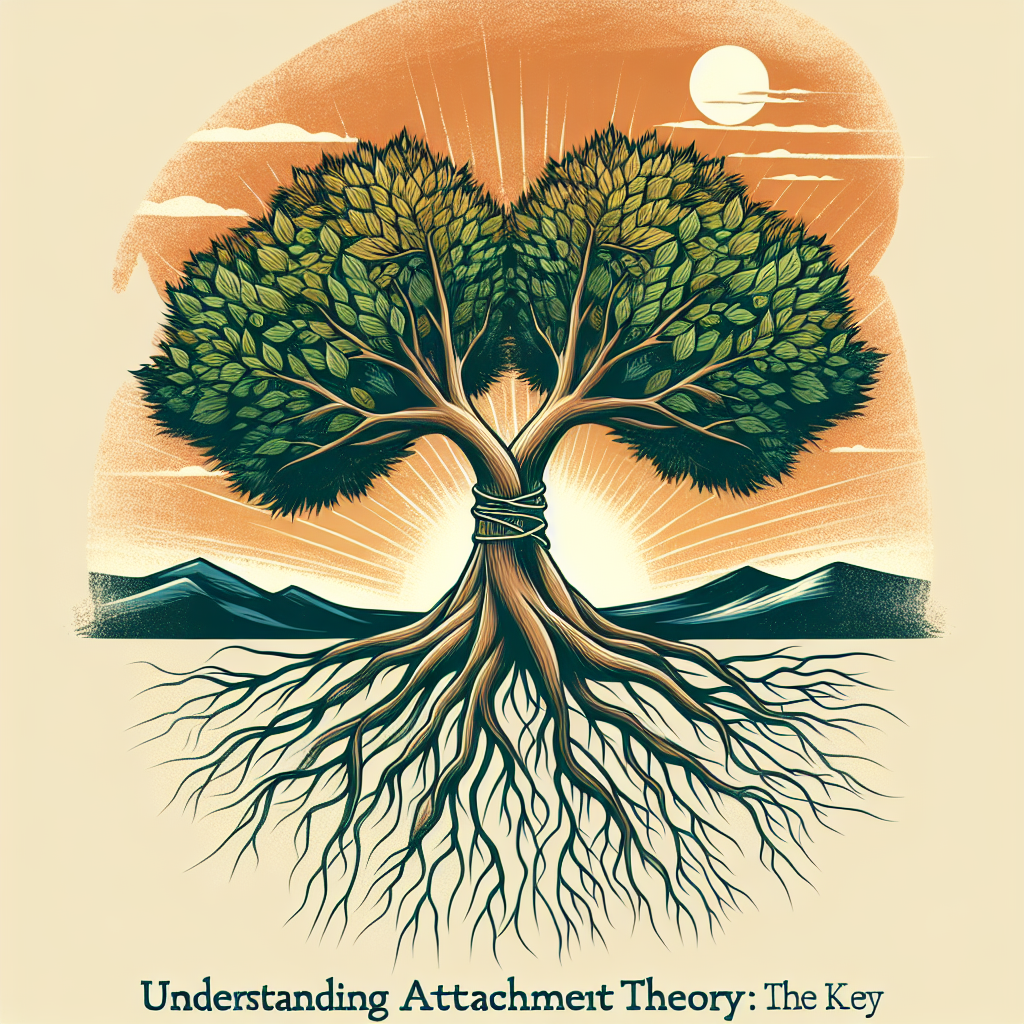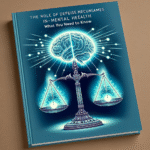
Introduction
Have you ever wondered why some relationships thrive while others struggle? The answer often lies in attachment theory, a vital psychological framework that can illuminate the dynamics of our closest connections. Understanding Attachment Theory: The Key to Healthier Relationships sets a foundation for individuals seeking deeper intimacy, more durable bonds, and effective conflict resolution. Whether you’re grappling with perennial relationship issues or simply want to enhance your connections, delving into attachment theory may provide the insights you need to transform your interpersonal experiences.
In this comprehensive exploration, we will uncover the origins of attachment theory, examine different attachment styles, and discuss actionable steps to foster healthier relationships. Along the way, we will highlight real-world case studies that illustrate how understanding these dynamics can lead to personal growth and enhanced relational well-being.
The Foundations of Attachment Theory
What Is Attachment Theory?
At its core, attachment theory was developed by British psychologist John Bowlby in the mid-20th century. It posits that the emotional bonds formed between a caregiver and an infant influence the child’s social and emotional development throughout adulthood. These early experiences create "attachment styles," which dictate how we perceive, pursue, and maintain relationships as adults.
The Four Main Attachment Styles
-
Secure Attachment
- Characteristics: Individuals with secure attachment styles typically feel comfortable with intimacy and independence. They are often warm, loving, and effective communicators.
- Benefits in Relationships: Their self-esteem allows for balanced partnerships, and they are more likely to engage in healthy conflict resolution.
-
Anxious Attachment
- Characteristics: Anxious individuals may crave closeness but live in fear of rejection. They often display clinginess or excessive need for reassurance.
- Challenges in Relationships: This style can lead to misunderstandings, as they may misinterpret their partner’s actions as indications of detachment.
-
Avoidant Attachment
- Characteristics: People with avoidant attachment styles tend to value independence over closeness. They may dismiss emotional expression and often feel uncomfortable with intimacy.
- Impact on Relationships: Avoidant individuals may struggle with commitment and build barriers that prevent their partners from getting close.
- Disorganized Attachment
- Characteristics: This style is often a mix of anxious and avoidant traits. Individuals may oscillate between longing for closeness and pushing others away due to fear and confusion stemming from unresolved trauma.
- Consequences for Relationships: Their unpredictable behavior can create chaos within relationships, often resulting in intense but unstable connections.
Case Study: The Secure Couple
Consider Sarah and Tom, a couple with secure attachment styles. They enjoy open communication, mutual respect, and effective problem-solving strategies. When conflicts arise, they discuss their feelings without blame, demonstrating how secure attachments can lead to healthier relational dynamics.
Analysis of Case Study
This case exemplifies how attachment theory manifests in everyday relationships. By embracing their secure attachment styles, Sarah and Tom create a safe emotional environment conducive to constructive communication and partnership resilience.
Understanding Attachment in Real Life
The Role of Upbringing in Attachment Styles
The attachment styles formed in childhood significantly shape perspectives and behaviors in adult relationships. For example, children who experience consistent and responsive caregiving tend to develop secure attachments, whereas inconsistent or neglectful caregiving can lead to anxious or avoidant attachments.
Transitioning Between Attachment Styles
One of the most liberating aspects of attachment theory is the understanding that change is possible. With self-awareness and effort, individuals can shift from insecure to secure styles through various methods, including therapy, supportive relationships, and personal development.
Case Study: Transforming Anxious Attachment
Meet Jason, who struggled with anxious attachment due to a chaotic upbringing. After engaging in therapy, he learned to communicate his needs effectively and establish boundaries. As a result, his relationships improved markedly, showcasing the potential for transformation through understanding attachment theory.
Analysis of Case Study
Jason’s journey demonstrates how awareness of one’s attachment style can catalyze positive change. By actively working on his insecurities, he illustrates that transforming attachment styles is integral to understanding attachment theory: the key to healthier relationships.
Practical Strategies for Enhancing Relationships
Recognize and Understand Your Attachment Style
The first step in using attachment theory as a roadmap for healthier relationships is recognizing your attachment style. Questions you might ask yourself include:
- How do I typically react to intimacy?
- Am I comfortable with vulnerability?
- How do I handle conflict?
Foster Secure Attachments
Building secure attachments involves both self-regulation and the cultivation of empathy:
- Practice Good Communication: Be open, honest, and assertive in expressing needs and feelings.
- Establish Trust: Consistency in words and actions fosters trust. Ensure your behavior aligns with your intentions.
- Encourage Independence: Healthy relationships involve balance; allow space for both partners to grow individually.
Seek Professional Support
Therapy can be a valuable tool for anyone looking to understand their attachment styles better. A therapist can help identify patterns and equip individuals with tools to foster healthier connections.
Create a Safe Space for Expression
Prioritizing emotional safety is fundamental to healthy attachments. Encourage open dialogue where both partners can share thoughts and feelings without fear of judgment or retaliation.
Case Study: Creating Emotional Safety
Consider Emily and Mark, who initially struggled to communicate their needs. After attending couples therapy focused on attachment theory, they learned to express themselves openly, creating a safe environment that allowed their relationship to flourish.
Analysis of Case Study
Emily and Mark’s story emphasizes the importance of creating a foundational emotional safety net in relationships. This example illustrates that understanding attachment theory can significantly enhance interpersonal communications, leading to healthier relationships.
Conclusion
Understanding Attachment Theory: The Key to Healthier Relationships is an invaluable journey for anyone wishing to deepen their connections and cultivate sustaining partnerships. By recognizing and addressing attachment styles, fostering communication, and prioritizing emotional safety, we equip ourselves and our relationships for success.
Transform your relationships today by embracing the power of attachment theory. Whether you’re nurturing existing connections or building new ones, remember that the key to healthier relationships lies in understanding ourselves and our partners more profoundly.
FAQs
1. What is the main idea behind attachment theory?
Attachment theory explains how the bonds we form in early childhood with caregivers shape our adult relationships. Your attachment style influences how you connect, communicate, and resolve conflict with others.
2. How can understanding my attachment style help improve my relationships?
By recognizing your attachment style, you can identify patterns of behavior that may be harming your relationships. This awareness allows you to adopt healthier communication strategies and develop greater empathy toward your partner’s needs.
3. Can my attachment style change over time?
Yes, with awareness and effort, it is possible to shift from an insecure to a secure attachment style. Therapy, supportive relationships, and personal growth can facilitate this transformation.
4. How can I communicate my needs effectively in a relationship?
Use “I” statements to express your feelings without assigning blame. Be direct yet open, explaining what you need from your partner and why.
5. Why is emotional safety crucial in relationships?
Emotional safety fosters trust and encourages openness, allowing partners to express feelings and vulnerabilities without the fear of judgment or retaliation. This foundational element is essential for building secure attachments.
By incorporating these principles and insights into your relationships, you can leverage the knowledge of attachment theory as a profound tool for enhancing emotional connections and building lasting partnerships. Understanding Attachment Theory: The Key to Healthier Relationships is not just an academic exercise; it’s a transformative process that empowers us to live more fulfilling lives through our connections with others.

















